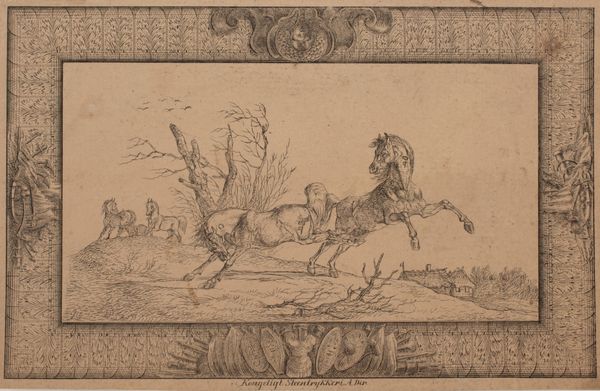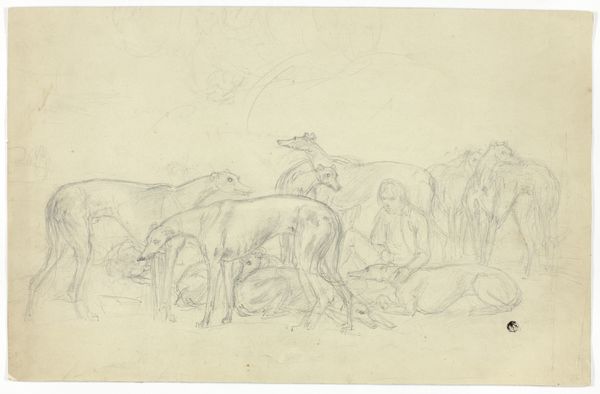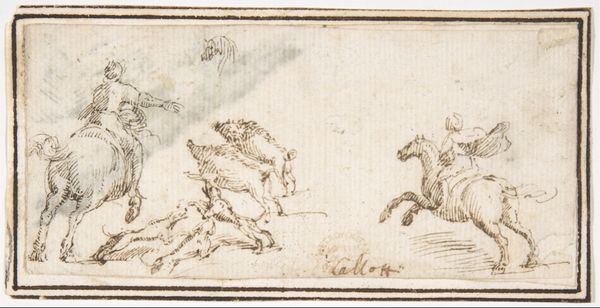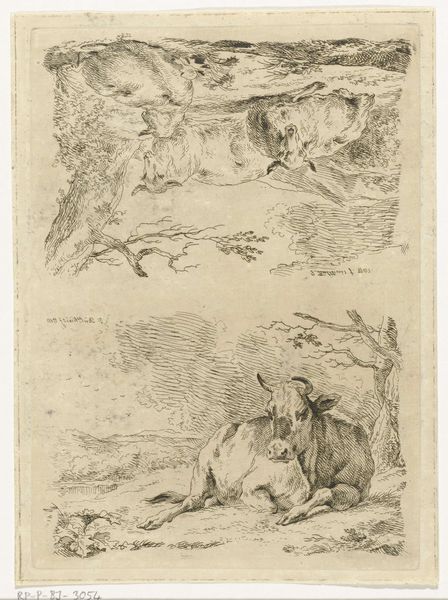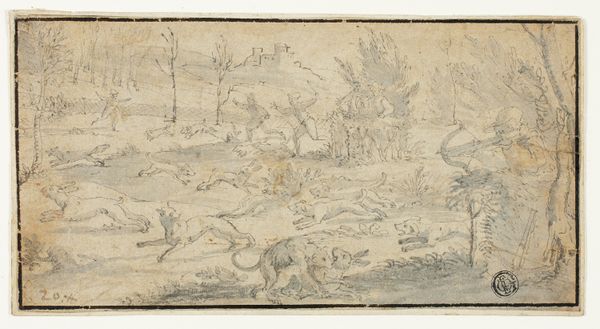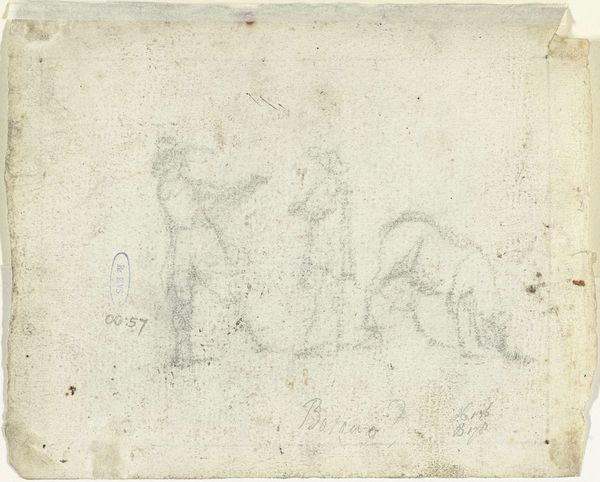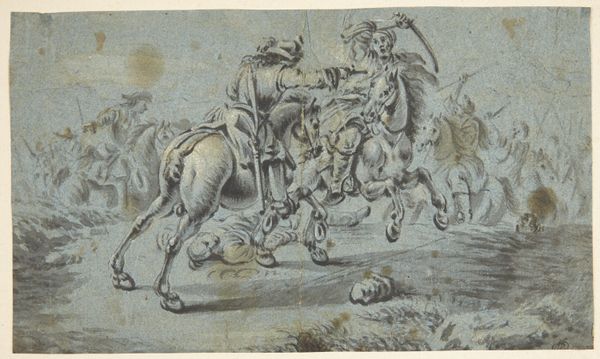
drawing, pencil
#
drawing
#
dog
#
landscape
#
pencil
#
realism
Copyright: Rijks Museum: Open Domain
Johannes Tavenraat made this graphite drawing of a dog, an ox and a feline in various landscapes sometime in the 19th century. It now resides in the collection of the Rijksmuseum. In the Netherlands, the 19th century saw the rise of naturalism in art, mirroring a broader societal interest in empirical observation and scientific classification. Animal studies became popular, reflecting a culture increasingly attuned to the natural world. The Rijksmuseum itself, founded in 1800, played a role in shaping artistic tastes and promoting national artistic identity. Tavenraat’s choice to depict animals in various poses may reflect a desire to understand and document their physical characteristics, perhaps influenced by scientific illustration. The drawing's loose style is typical of a sketch, suggesting that it might have been a preparatory study for a larger work. Historians might explore this sketch through the lens of 19th-century Dutch art academies. How did their curricula influence artists like Tavenraat? What role did museums play in defining artistic standards and shaping the production of art?
Comments
No comments
Be the first to comment and join the conversation on the ultimate creative platform.

